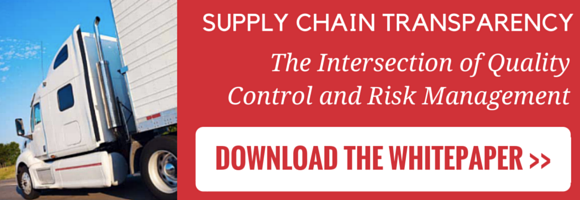
Initiatives like sustainable sourcing have a large impact on consumers in the food industry, but focusing on incoming ingredients or products is only half of the ethical marketing equation. As much as shoppers are voting with their wallets for companies that avoid disturbing the ecosystem during production, they're also very interested in the end of the product cycle.
- How much was discarded or used to make this item?
- How much packaging does it require, versus how much it uses?
- Is it packaged in reasonable, useful units to prevent spoilage during storage in warehouses and consumer homes?
These questions are only a fraction of the scrutiny that will be turned on your food supply chain in a marketplace dominated by informed consumers, so prepare your brand accordingly with these tips.
Take a Critical Look at Production
Reducing waste in your operational processes isn't always about fine-tuning efficiency; sometimes it calls for examining alternative uses for unavoidable waste. In The Huffington Post, Eleanor Goldberg notes that peels, trimmings, and even processed components can be sold to other food manufacturers for flavorings, colorings, biofuels, compost, animal feed and more, rather than being trucked off to a landfill. Examine what you're discarding from the in-store packing process, both edible and otherwise, and determine who it might be able to help, and in what quantities. You'll likely be reducing your carbon footprint, an initiative that's worth a bullet point or two in corporate literature and websites.
Tighten Up Transport and Storage
It doesn't take very long for shoddy refrigeration to turn saleable food products into items destined for the "circular file." Transparency in your supply chain not only bolsters efficiency in delivery windows, it safeguards your product against taking an unnecessary hit. If you can't see where your cold food supply chain products are at all times, you run the risk of introducing a "hitchhiker" into your transport and logistics: carelessness. Sometimes a truck stalls, or warehouse environmental controls experience a glitch, but the sooner you know about it, the sooner you can address — and hopefully save — at-risk product. Bill Tomasi of Refrigerated & Frozen Food also cautions food companies to integrate planning and segmentation into their logistics. Not all products from a line are created equal, after all, and high demand products should be paired with faster shipping methods, while those in lower demand can afford slower routes.
An Unsalable Co-Plan Is Needed
It's safe to say that every supply chain has a goal in place to reduce or eliminate unsold product. Specifically, to move everything from the distributor into consumer hands before it has the chance to age out or expire on-shelf. While that's admirable, it's not always possible, and the way your product is handled in this situation can impact consumer perception. Establish an in-store plan for how unsold product is handled; specifically, if it is disposed of in an eco-friendly way, or, ideally, if it is donated to help those in need instead. These kind of eco-friendly efforts will strengthen your value proposition to the end consumer, reassuring them that your brand is "green" and forward-thinking from production to purchase level. Huffington Post's Patricia Yam highlights just such a partnership between UK-based supermarket Tesco and Community Food Connection, a local charity, that is putting excess food to good use even though it can longer be sold.
Consumers want to buy brands that align with their personal need to get the most out of their purchases, both from an economic and ecological standpoint. By working within these guidelines, you can effectively reduce the cost, both seen and unseen, of waste along the food supply chain and even drive end-chain price points down at the same time.
Don't let habit saddle you with waste in the supply chain: it's time to take out the trash by making less of it in the first place.






